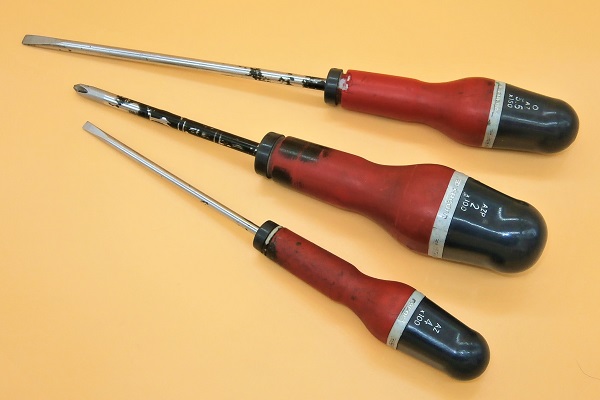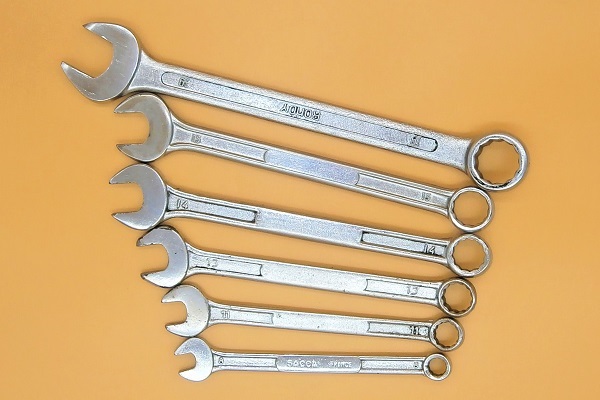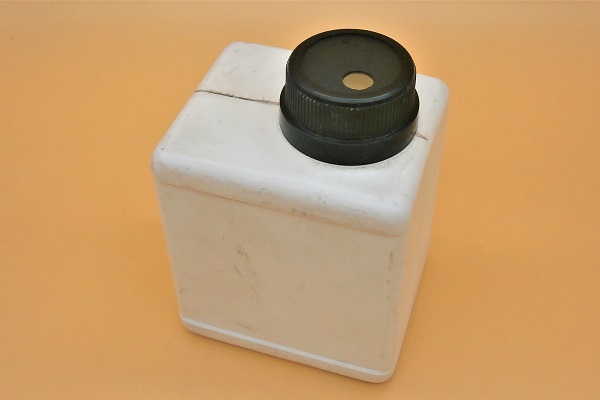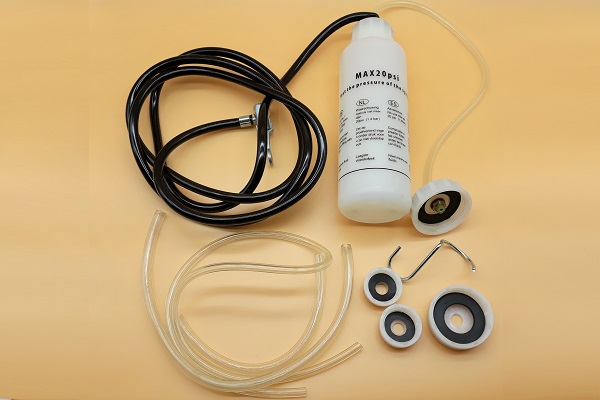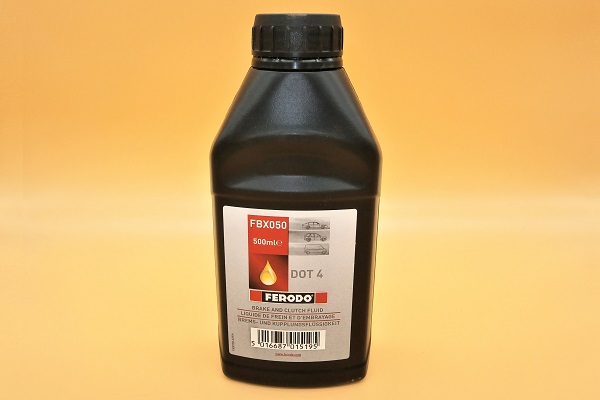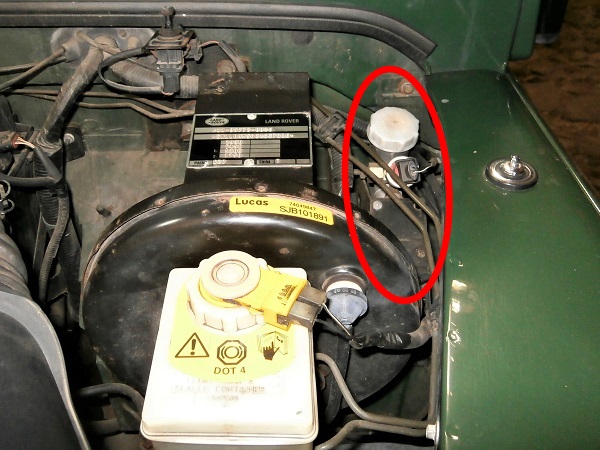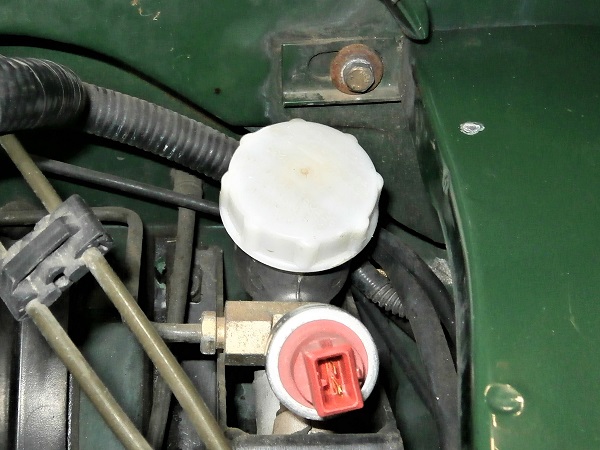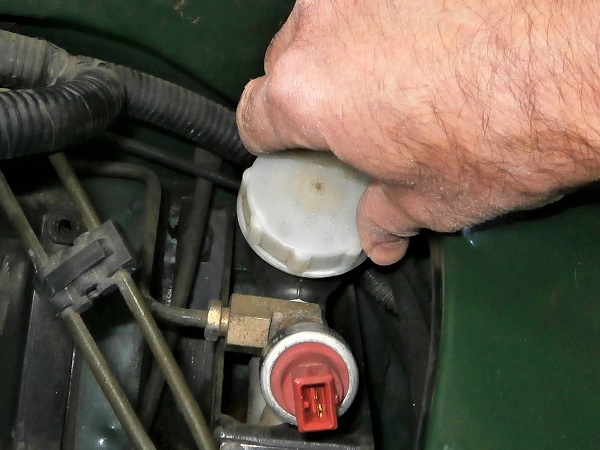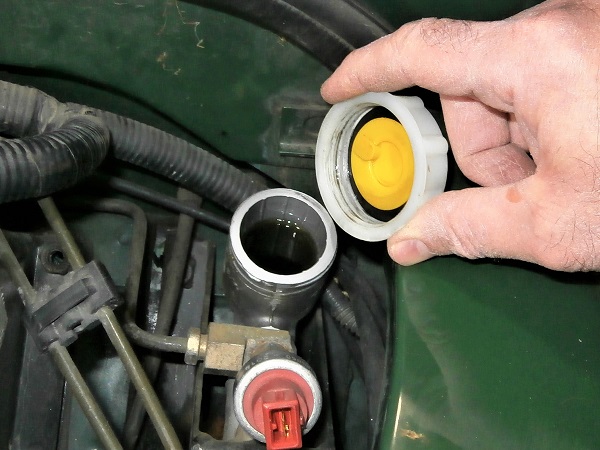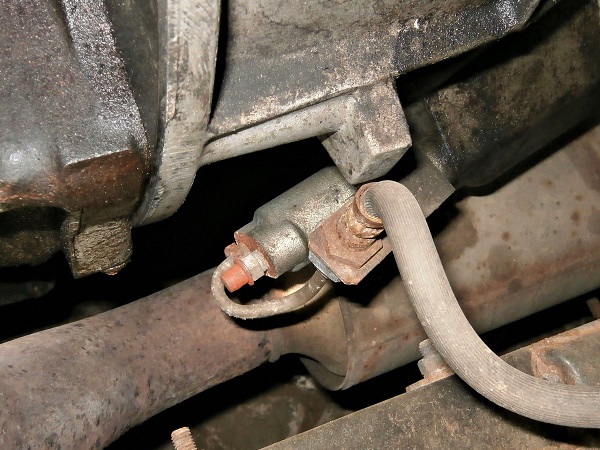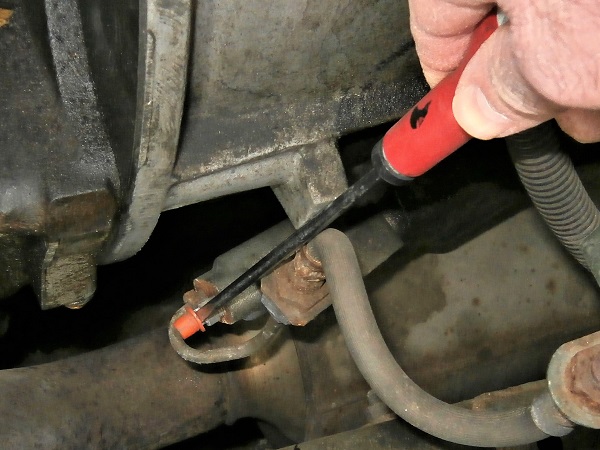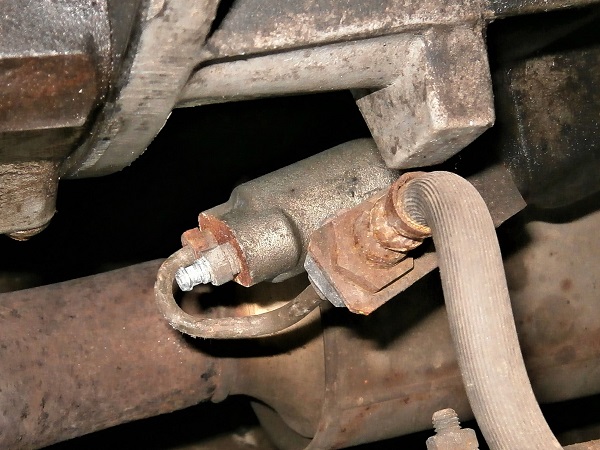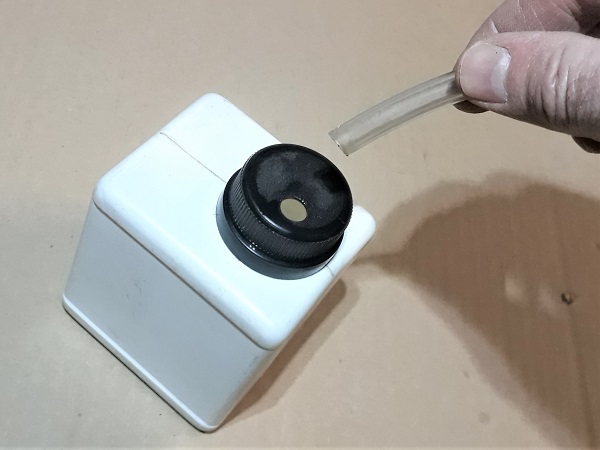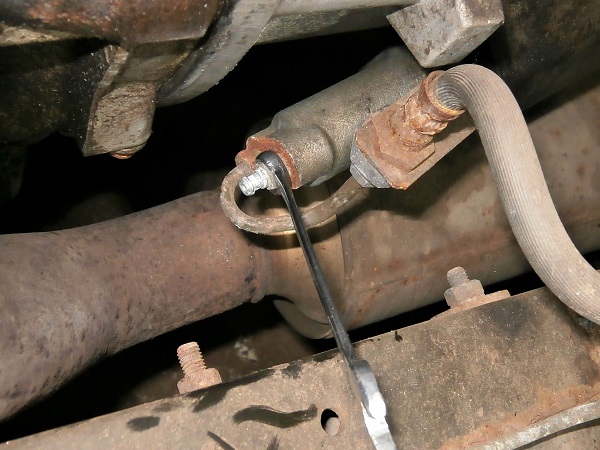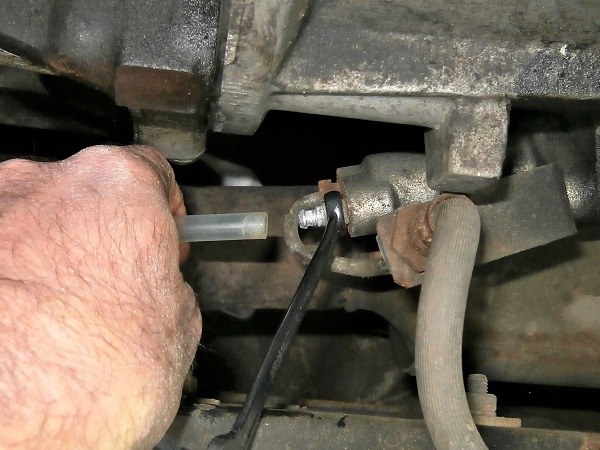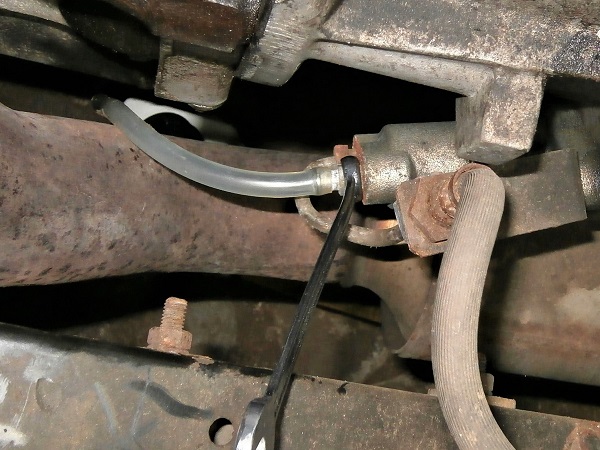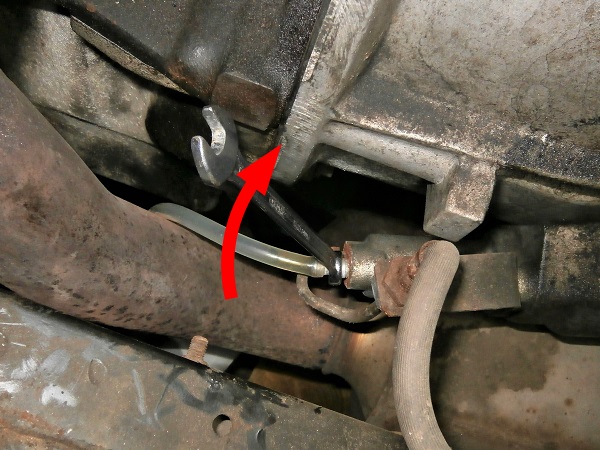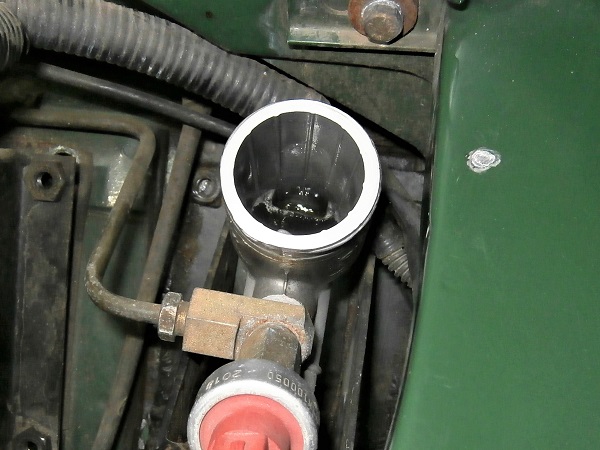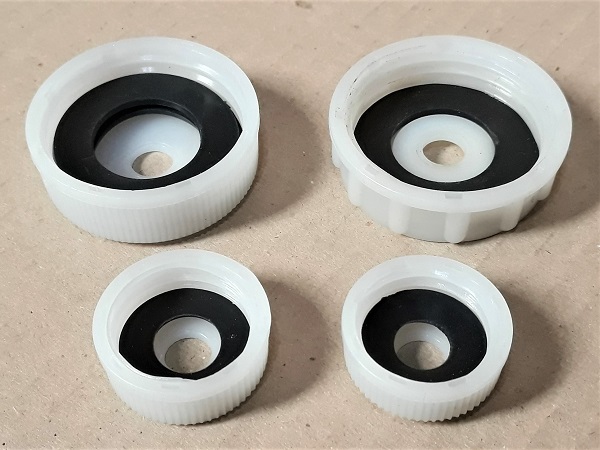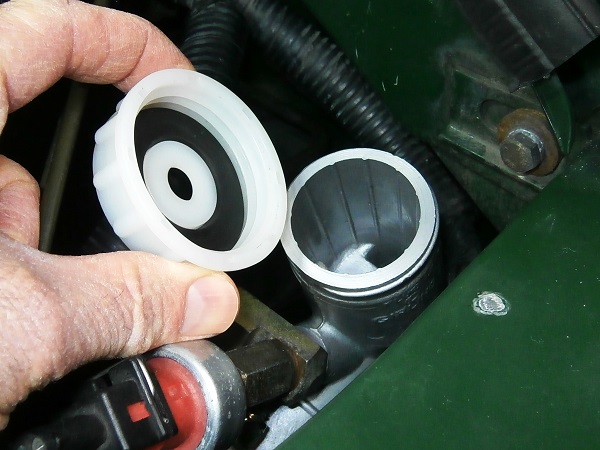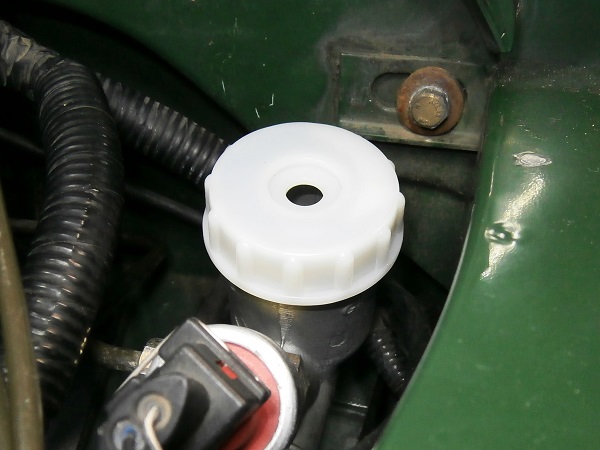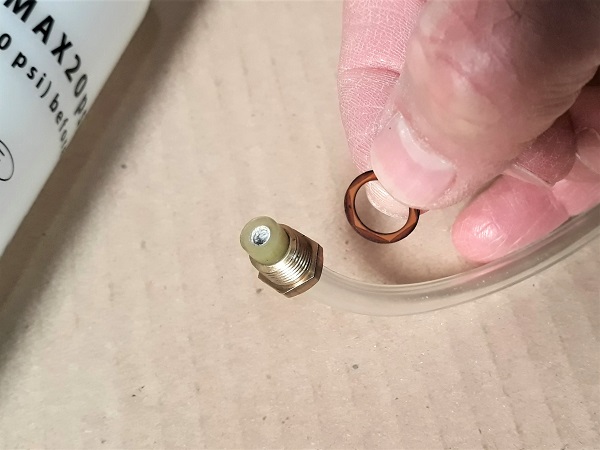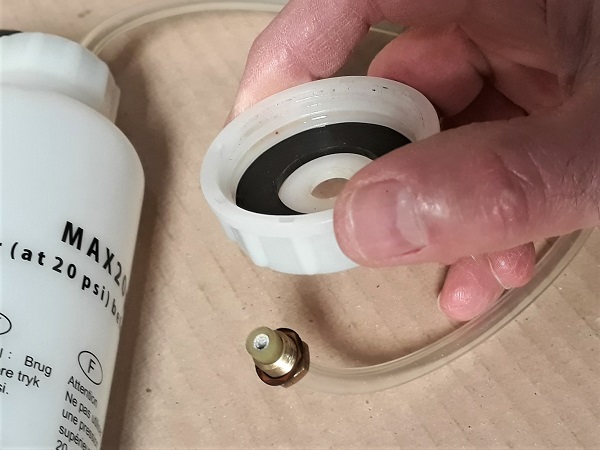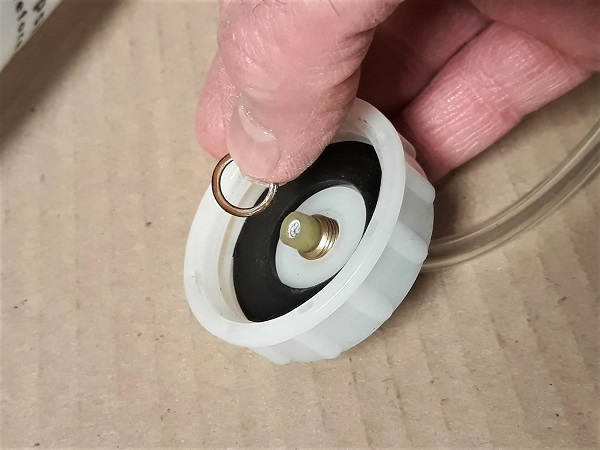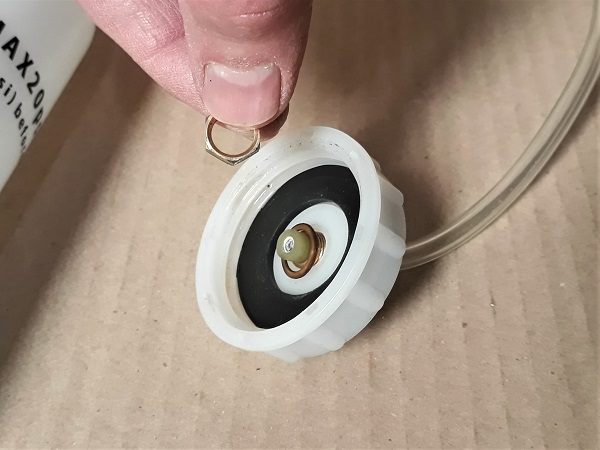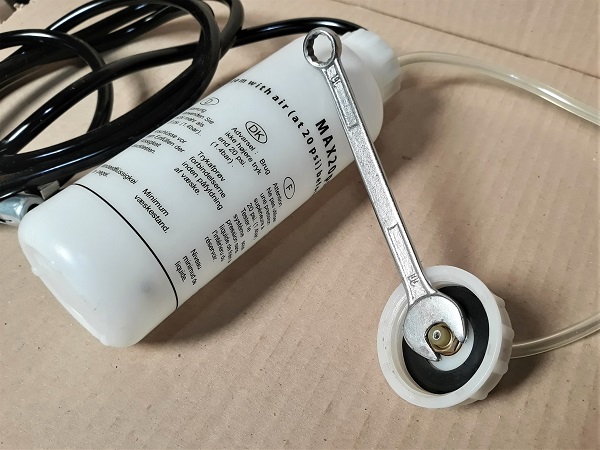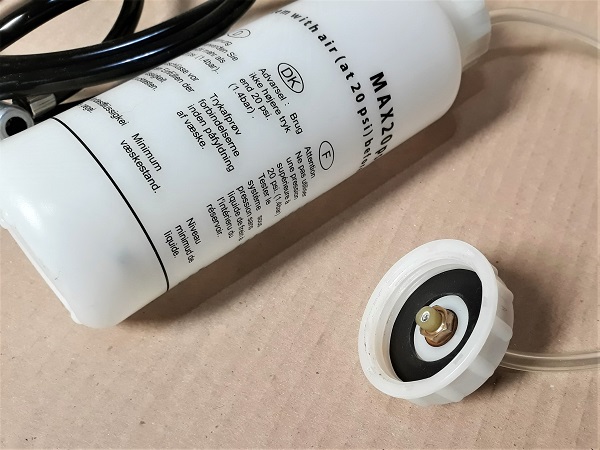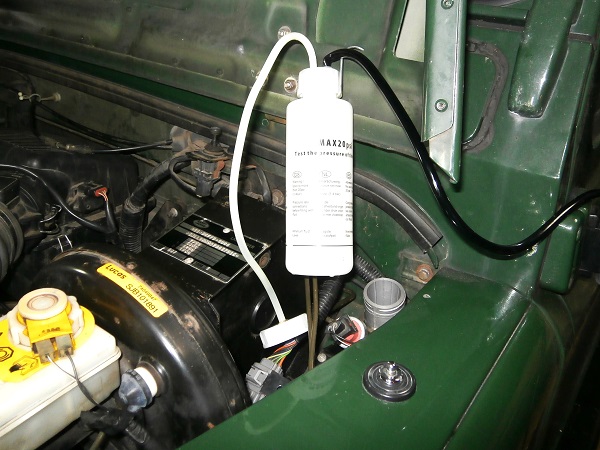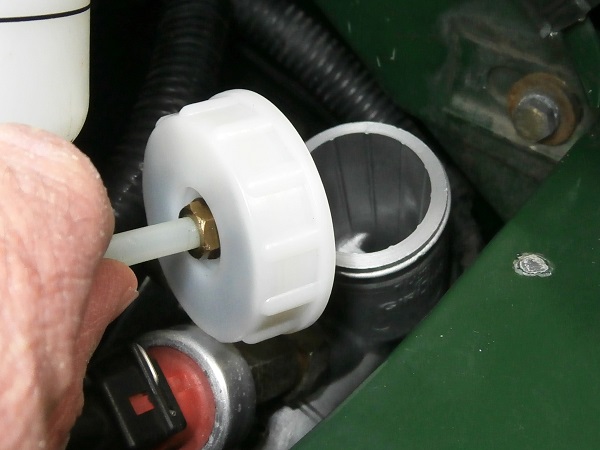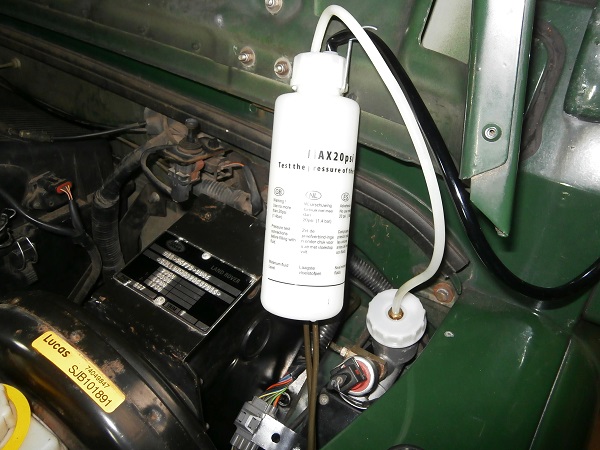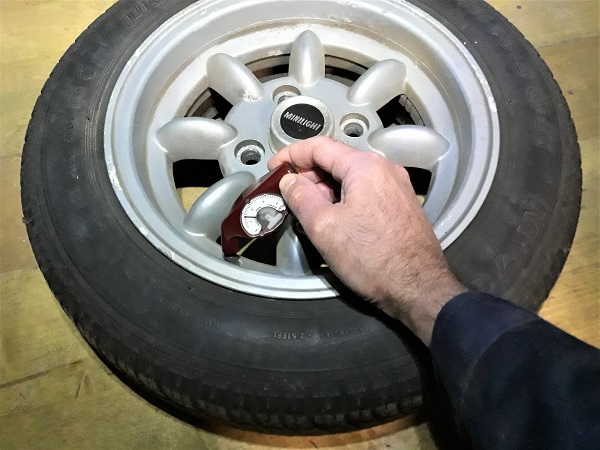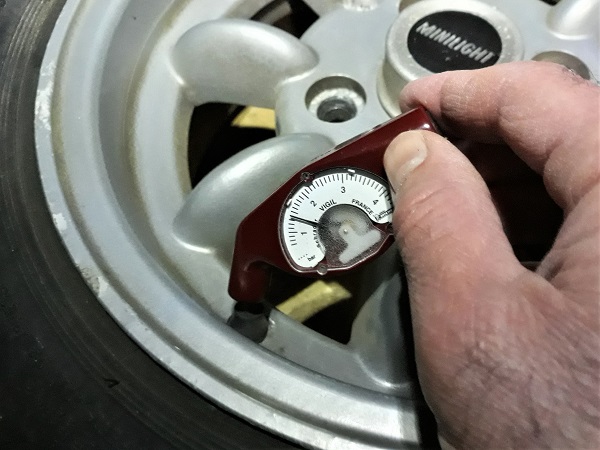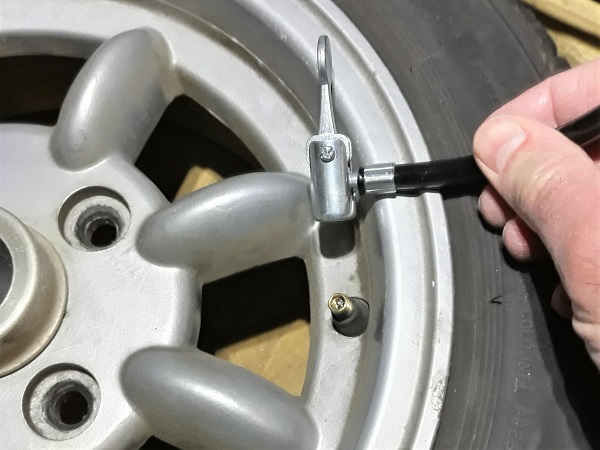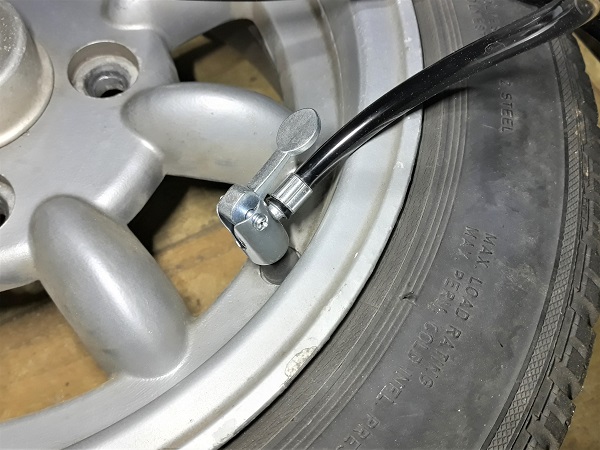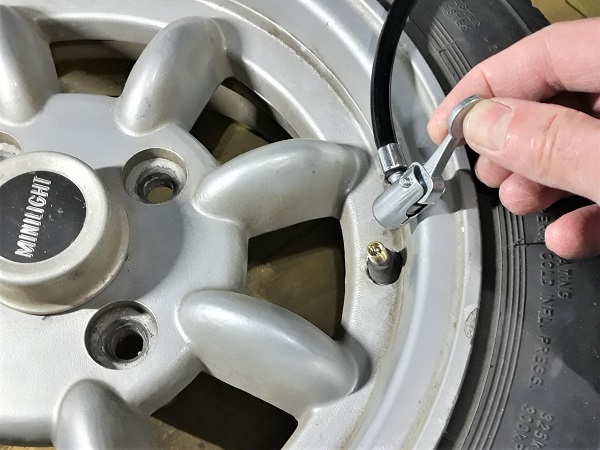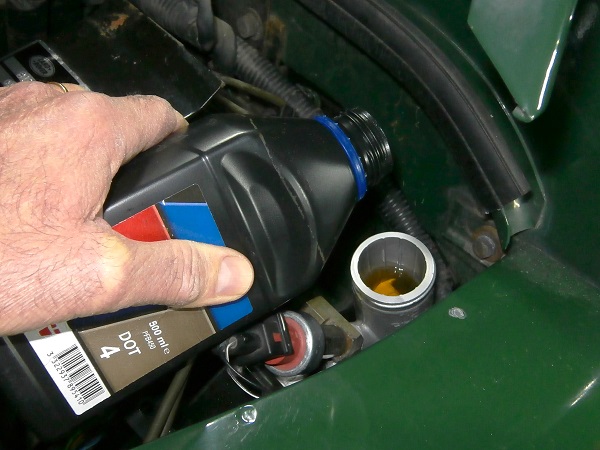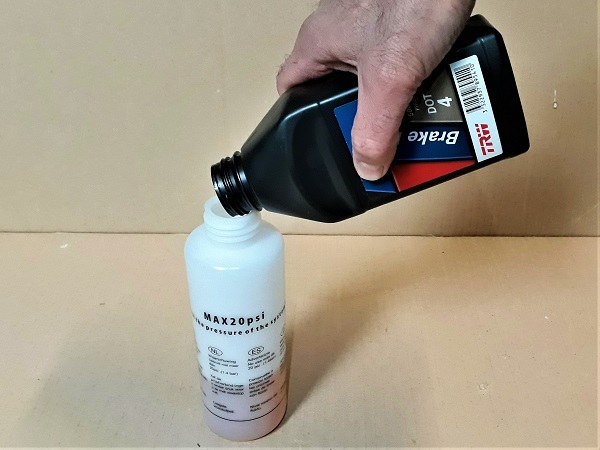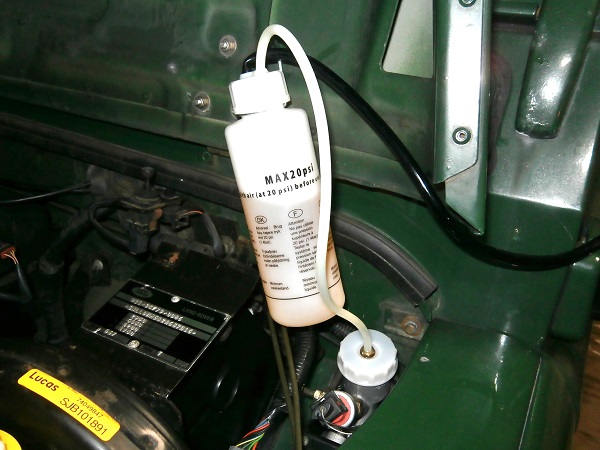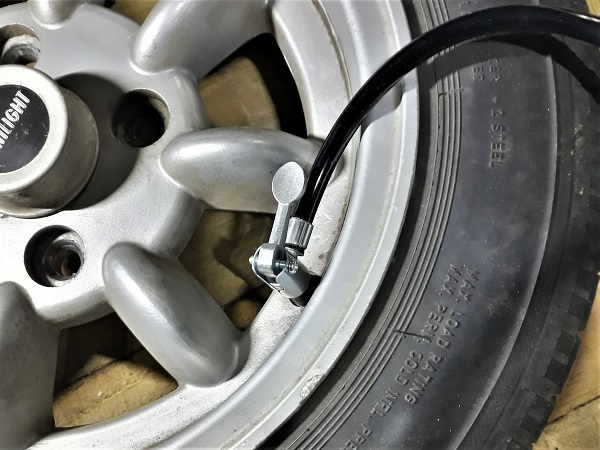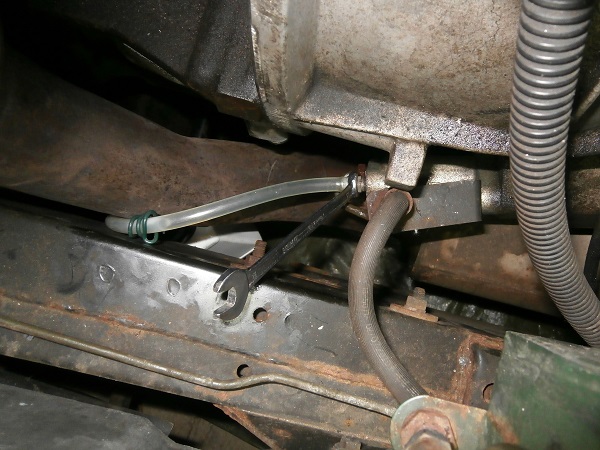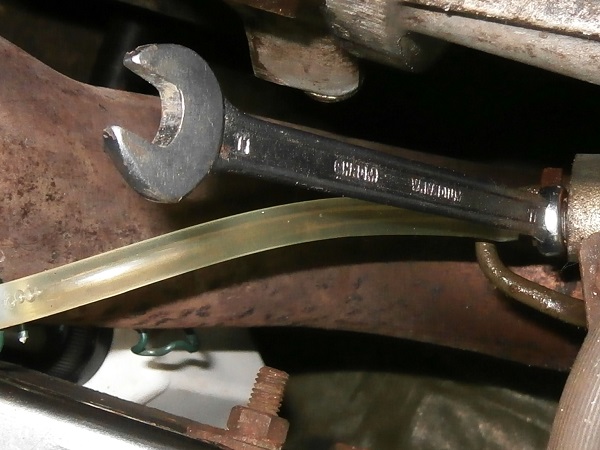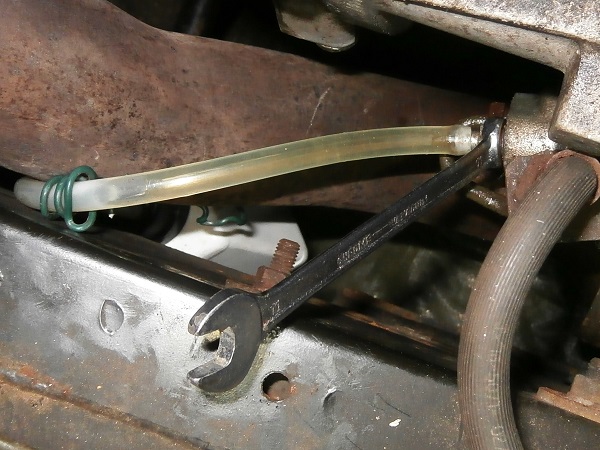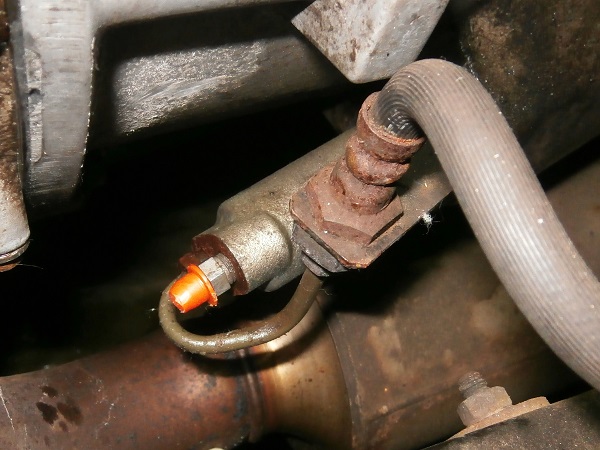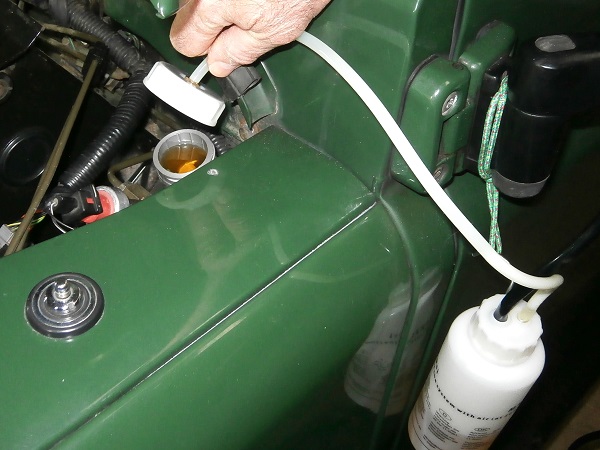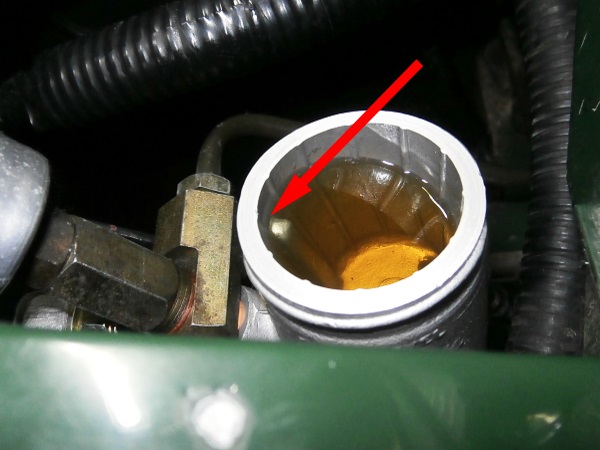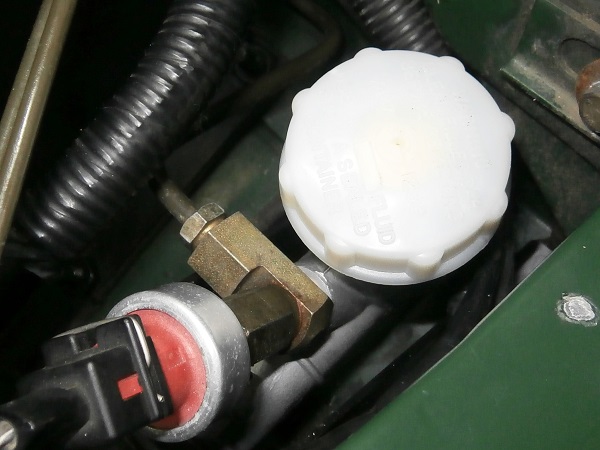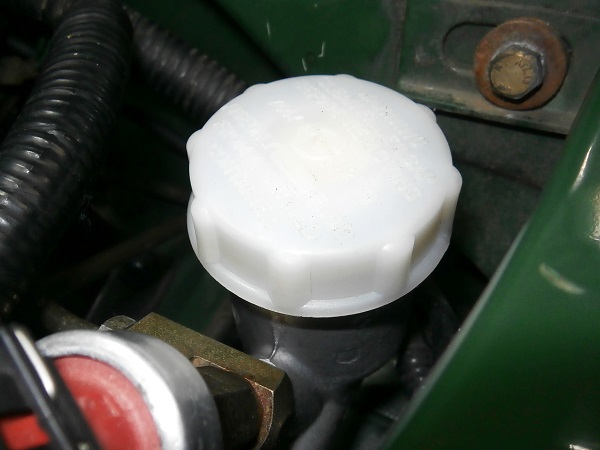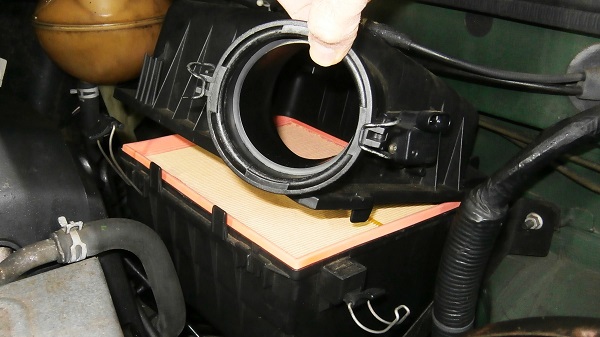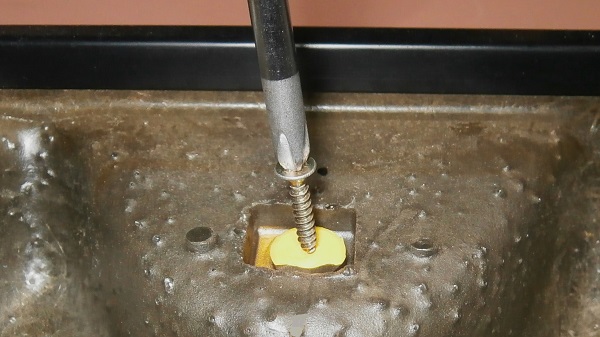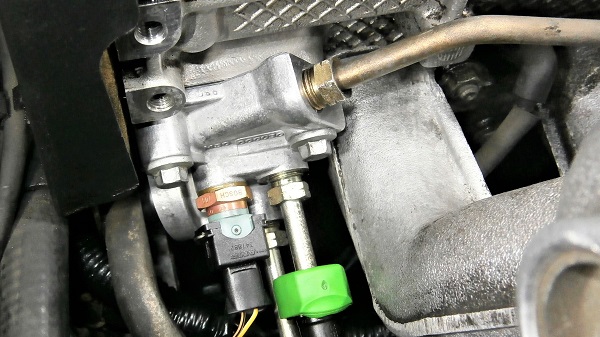Clutch hydraulic system bleeding on Defender Td5
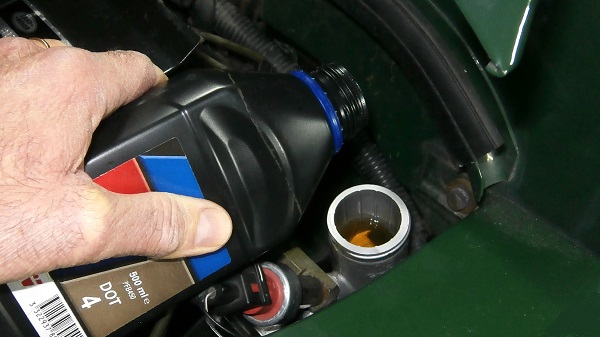
Vehicle ➔ Defender 110 Td5 2002
Difficulty ➔ Easy

Time ➔ 1 hour
Summary
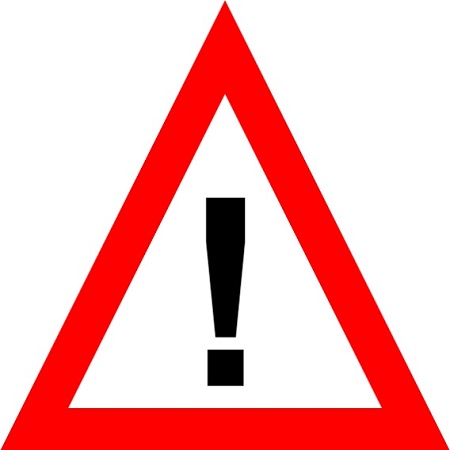
This tutorial concerns the Defender Td5. There is another tutorial that deals with the
bleeding of the clutch hydraulic system on Defender Td4 (➔ see the tutorial).

When you see that the brake fluid in the clutch master cylinder reservoir has lost its beautiful amber color, it is time to drain the clutch hydraulic system.

Here are the 2 reasons why we need to regularly change the brake fluid in the clutch system :
• Over time, the brake fluid loses its anti-corrosion properties. The hydraulic system is no longer protected and may rust.
• Over time, the brake fluid absorbs moisture from the air and becomes saturated with water. It then loses its effectiveness.
• Over time, the brake fluid loses its anti-corrosion properties. The hydraulic system is no longer protected and may rust.
• Over time, the brake fluid absorbs moisture from the air and becomes saturated with water. It then loses its effectiveness.

Always use new brake fluid. Never put used fluid back into the clutch master cylinder reservoir.

Brake fluid is extremely aggressive to paint. Be careful not to spill any on the bodywork. Clean any stains immediately with a cloth and water.

Used oils, brake fluids, seals and filters are hazardous waste for the environment. They must in no circumstances be thrown neither in the natural environment, nor in the sanitation network, nor in household waste. They must be deposited in a recycling center.
The Eezibleed kit

The Eezibleed kit allows you to bleed the brake or clutch hydraulic systems by yourself without pressing the pedals. No need to purchase the kit if you have a friend to help you. In this case, you can use the traditional method of bleeding when your assistant presses the brake or clutch pedal.

The Eezibleed kit is powered by compressed air from the spare wheel, which you will need to deflate beforehand to 1.4 bar maximum. For our part, we prefer to go down to 1.0 bar to avoid any risk of brake fluid leaking from the master cylinder reservoir cap.

The Eezibleed kit comes with several reservoir caps. Simply select the cap suitable for the master cylinder reservoir.

When bleeding, the master cylinder reservoir empties much more slowly because it is automatically supplied with new brake fluid by the Eezibleed bottle. It is therefore unnecessary to constantly monitor the brake fluid level in the master cylinder reservoir in order to prevent air from entering the hydraulic system. However, you should still check the Eezibleed bottle from time to time.
Advertisement
Drain the clutch hydraulic system
Op 01
Locate where the clutch master cylinder is.
Op 02
Remove the cap from the clutch master cylinder reservoir. Unscrew by hand.
Op 03
Locate where the clutch slave cylinder is.
Op 04
Remove the dust cap from the clutch slave cylinder bleed screw. Use the flathead screwdriver.
Op 05
Fit the bleed hose (included in the Eezibleed kit) on the used brake fluid recovery tank.
Op 06
Fit the 11 mm combination spanner on the clutch slave cylinder bleed screw. Do not loosen it yet.
Engage the bleed hose on the bleed screw. Push by hand.
Op 07
Loosen the bleed screw slightly (1/2 turn). Use the 11 mm spanner.
Let the brake fluid drain.

No need to press the clutch pedal. In a few minutes, the master cylinder reservoir will be empty (2nd photo).

Tighten the bleed screw when the brake fluid has drained.
Advertisement
Install the Eezibleed kit
Op 08
Select the Eezibleed kit cap adapted to the Defender's clutch master cylinder reservoir.
Check that it screws perfectly onto the reservoir.
Op 09
Assemble the cap on the kit hose using the seals and nut provided with the Eezibleed kit. Use the 11 mm spanner.

Do not forget to fit the seals on either side of the cap as indicated in the instructions.
Op 10
Hang the Eezibleed bottle near the clutch master cylinder. Use the hook included in the kit.
Fit the cap on the master cylinder reservoir. Screw on by hand.

Do not fill the Eezibleed bottle for now because we will first check the tightness of our installation. This check is essential because if there is a leak at the master cylinder reservoir cap, the brake fluid contained in the bottle will flow and flood the bulkhead.

Before screwing, check that the cap seal is correctly positioned.

Do not overtighten the cap on the reservoir. Screw it until you feel the seal contact the reservoir and tighten an additional 1/8th of a turn.
Op 11
Check the spare wheel pressure. Use the pressure gauge.
Deflate the wheel to reach the maximum of 1.4 bar.

Gunson, the manufacturer of the Eezibleed kit, recommends a maximum pressure of 1.4 bar. For our part, we prefer to go down to 1.0 bar to avoid any risk of brake fluid leaking from the reservoir cap.
Op 12
Connect the Eezibleed kit to the spare wheel.
Check that there are no air leaks at the master cylinder reservoir cap.

Before connecting the kit, check that the clutch slave cylinder bleed screw has been tightened.
Op 13
Disconnect the Eezibleed kit from the spare wheel.

Always disconnect the spare wheel before unscrewing the master cylinder cap or the bottle cap.
Advertisement
Bleed the clutch hydraulic system
Op 14
Fill the master cylinder reservoir and the Eezibleed bottle with new DOT4 brake fluid.
Hang the Eezibleed bottle again.
Screw the Eezibleed cap onto the master cylinder reservoir.

Make sure that the bottle is almost in a vertical position. Check that the end of the plastic hose touches the bottom of the bottle (3rd photo).
Op 15
Connect the Eezibleed kit to the spare wheel again.
Op 16
Loosen the clutch slave cylinder bleed screw by 1/4 turn. Use the 11 mm spanner.
Let the used brake fluid drain until there are no more air bubbles.
Tighten the bleed screw.

Check regularly that there is always brake fluid in the Eezibleed bottle. Add more if necessary. It is essential to prevent air from entering the clutch hydraulic system.
Op 17
Disconnect the bleed hose. Pull by hand.
Remove the spanner.
Fit the dust cap on the bleed screw. Push by hand.
Op 18
Disconnect the Eezibleed kit from the spare wheel.
Remove the Eezibleed kit cap. Unscrew by hand.

Before unscrewing the cap, position the bottle lower than the master cylinder and wait for the hose to empty into the bottle. This will prevent spilling the brake fluid contained in the hose on the bulkhead.
Op 19
Check the level of the clutch master cylinder reservoir. Add or remove brake fluid (DOT4) if necessary.

The fluid level to be respected is marked by a boss inside the master cylinder reservoir (see the arrow in the photo).
Op 20
Fit the clutch master cylinder reservoir cap. Screw on by hand.

When the bleeding operation is complete, always clean the Eezibleed kit elements (bottle, cap, hoses and seals) with brake cleaner. Over time, the brake fluid could attack the rubbers and plastics.
Op 21
Check that the clutch pedal is hard. Press with your foot.
Op 22
Take a road test to verify that the clutch is working perfectly.
The End





